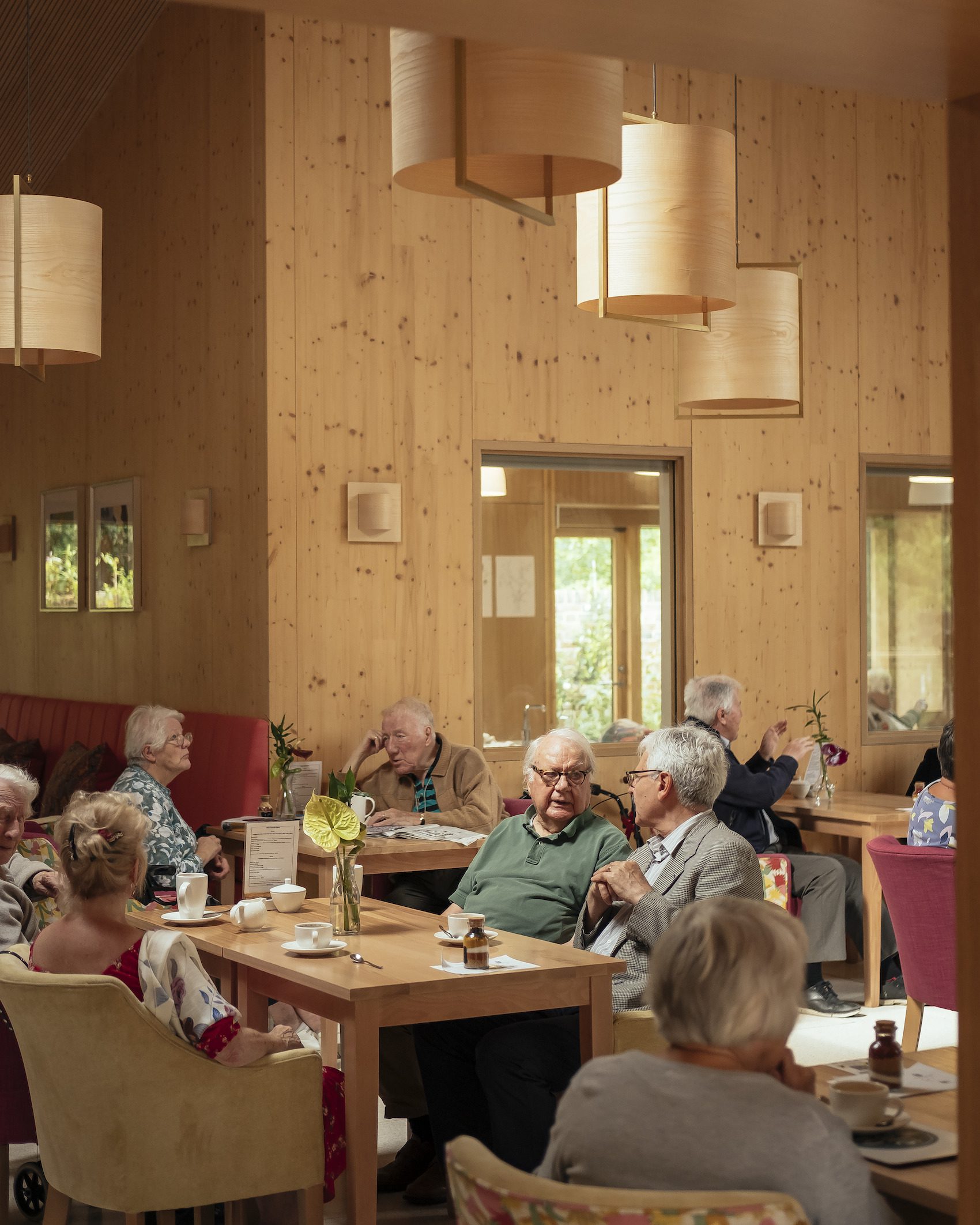Designers and investors are driving a step change in the provision of innovative high-quality projects in the third-age housing sector. Local authorities need to catch up, says Ballymore creative director Roger Black.
The renewed interest in architectural housing solutions for senior people is great to see, and the wonderful John Morden Centre by Mae Architects is another fine example of the trend. Here, the project brief is clear; enriching the life experience of a constituent group of users through a new platform for social interaction within an established community. This clarity of thought makes all the difference.
Loneliness has a profoundly negative impact upon one’s life experience, and life expectancy. If you’re lonely you’re likely to die younger – the statistics prove it. Unfortunately, the cultural expectation and norm in Britain is to sustain older people in largely empty and inappropriate homes for far too long. It’s viewed as the right thing to do, however more than often it is not. Loneliness destroys lives!
The John Morden Centre by Mae Architects provides a platform for social interaction within an established community.
This social isolation also creates unwarranted pressure on the NHS, with a huge share of hospital visits flowing from inappropriate housing circumstance, characterised by a lack of built-in community and social care infrastructure.
PegasusLife put third-age housing on the map for architectural innovation and excellence with more than 30 projects, all by celebrated architects.
A report published by the Local Government Association a decade ago highlighted that 50per cent of all local government expenditure went on social care, concentrated on under one per cent of the population. Even a minor reduction in social care dependence by the elderly through appropriate housing would reduce pressure on NHS and local authority budgets by a significant margin.
The Vincent, Bristol, by AHMM
The cascade of benefits to users and the wider community that flow from a new generation of well-designed specialist housing for older people are wide reaching: improving lives, encouraging residents to be socially and physically active, helping to pool services where they are needed most, and mitigating pressure on the NHS and local authorities.
A new generation of high-quality, carefully thought through third-age housing options would inspire older people to depart from the norm and ‘right-size’, which, in turn, would free up the housing chain for younger home buyers in established locations, helping to address the chronic housing supply shortage we face. Currently, we have more than five million homes that are under-occupied and nearly half of all people over the age of 75 live alone. While many older homeowners consider downsizing, very few are enticed to do so.

Mae designs John Morden Centre for older people
Mae has designed a community building that provides well-being and recreational facilities for the later living residents of London’s Morden College in Blackheath. Mary Duggan appreciates a sophisticated, humane design that reflects and anticipates social change.
Thankfully a fresh wave of investment capital is aggressively supporting new specialist housing projects for older people throughout Britain, and incrementally as more product comes on stream, consumer sentiment will evolve. The chance for aspiring design practices to become involved in this space is great news.
Disappointing however is that the enthusiasm of users and design professionals is not being matched by public officials and the political class. A new research report by Knight Frank and the law firm Irwin Mitchell shows that a third of local authorities do not have senior housing policies in place, and even amongst those that do, the number of units making their way successfully through the planning system is negligible. Joined-up thinking and planning remains the largest barrier to growth in the third-age housing sector.
Moor’s Nook in Horsell, Surrey by Coffey Architects
This research is a stark reminder that the sector continues to be widely overlooked at chief executive and leader level within local authorities, because decision making remains siloed at administrative levels below this, despite the increasing pressures to budgets and housing need – two issues rarely out of the news.
What’s needed at this stage, is not just well-intentioned strategy and policy talk, but a measurable shift in local planning systems, which flow from properly integrated decision making, so that quality senior housing is seen with the same imperative as family housing, student accommodation and buy to rent.
If the status-quo persists, whereby providers experience an uphill struggle in obtaining relevant planning consents, only small unit numbers will make it through the system and into use, thus the immense benefits are missed.
But all is not lost. At Pegasus Life we enjoyed a golden moment in third-age housing design when we were blessed to work concurrently with 12 celebrated practices, on more than 30 projects, winning planning consents in some of the most challenging localities. Alongside Mae, these practices included Sergison Bates, Morris + Company, Coffey Architects, AHMM, RCKa, Proctor & Matthews, HAL Architects and Glenn Howells Architects, to name a few.
Chapter House, Litchfield by Proctor & Matthews Architects
Collectively, we were driven by the challenge of making a desirable consumer product whilst also delivering a social good. This emboldened us all to push the envelope and challenge the intellectual and administrative stasis within local government. We were not always successful, however the teams achieved enough to validate the ambition. It was an exciting moment for all. These projects garnered an array of design accolades, putting third-age housing on the map for architectural innovation and excellence.
The challenge before us as real estate and design professionals is to continue the good fight with even more progressive output, such as the work by Mae. The magic is in improving lives.
Source: Architecture Today







